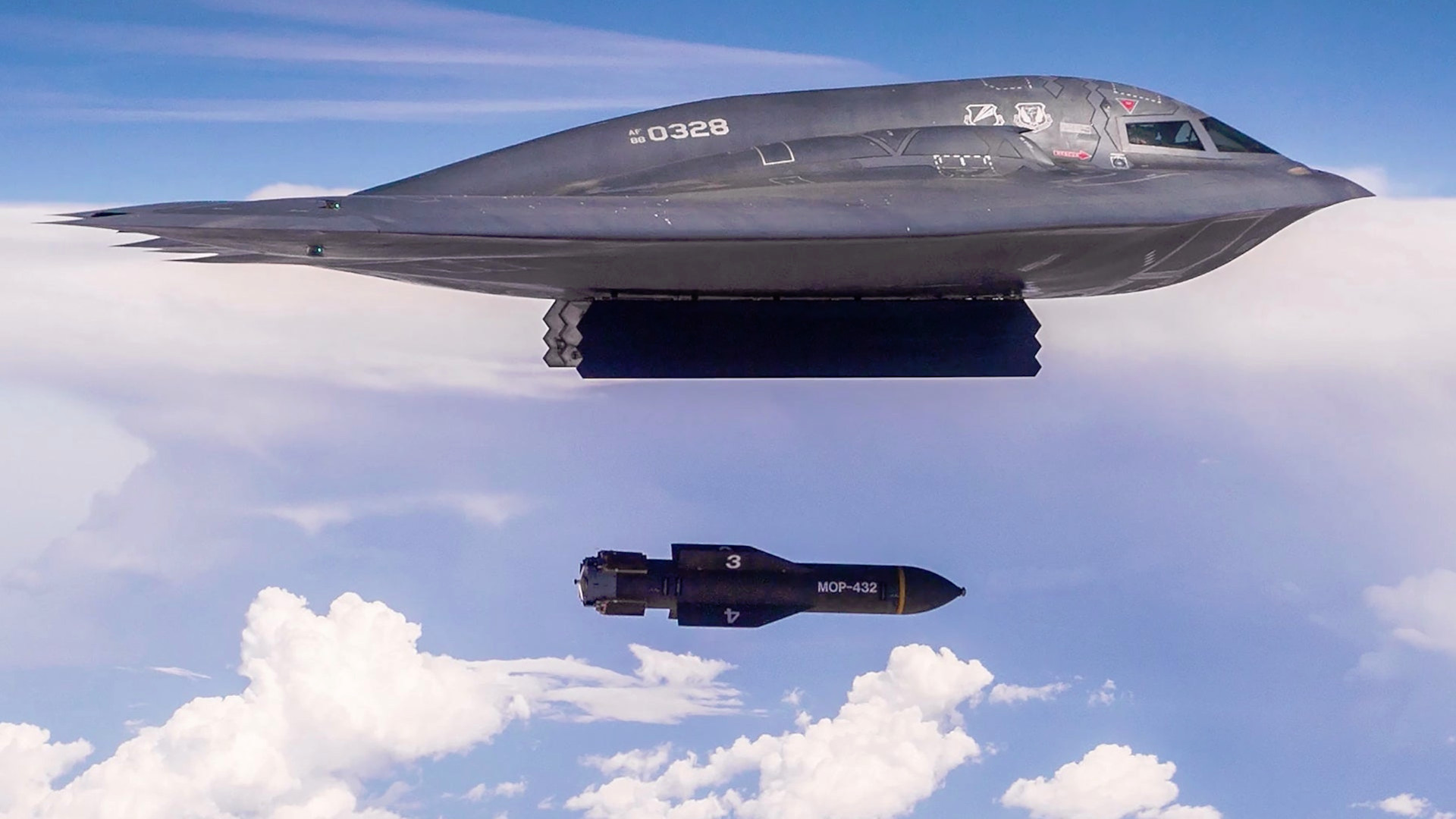The U.S. Air Force quietly fixed a problem with the integration of the 30,000-pound class GBU-57/B Massive Ordnance Penetrator (MOP) bomb onto the B-2 Spirit stealth bomber last year. This is especially significant given that the B-2 is the only aircraft currently certified to operationally employ the MOP, a huge precision bunker buster specially designed to penetrate very deeply buried and fortified targets. As part of the integration work, the service also conducted an important test of a new “smart fuze” for the MOP to help improve the weapon’s effectiveness, even when the exact depth and positioning of the buried target are not definitively known.
The Pentagon’s Office of the Director of Test and Evaluation (DOT&E) included an update on developments regarding MOP in its most recent annual report, which covers work on various programs conducted during Fiscal Year 2024. The exact size of the current MOP stockpile is unknown, but it is understood to be relatively small. As of 2015, prime contractor Boeing had delivered at least 20 of the bombs, according to the Air Force. There have been reports of additional orders over the years and a story from Bloomberg in 2024 said that a facility in Oklahoma was being expanded to help triple or even quadruple the annual output of these bombs.
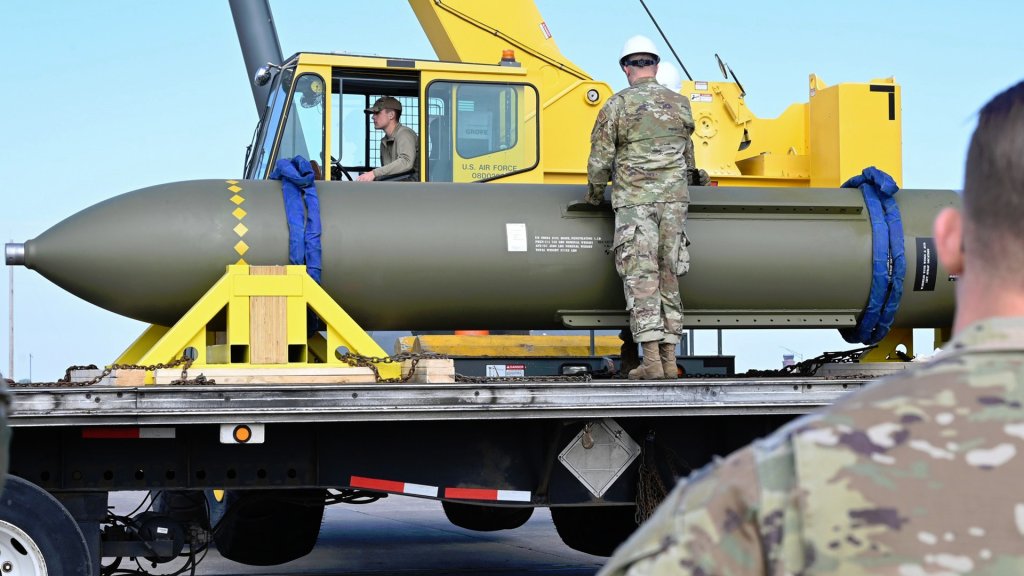
The Air Force’s stock of MOPs has been upgraded multiple times over the years already and at least five variants are known to exist, the latest of which is the GBU-57F/B. Also, while the B-2 is the only platform approved for employing the bombs operationally, B-52 bombers have dropped the bombs during tests.
“The Air Force conducted two full-scale tests in FY24 to verify fixes to a B-2 integration issue,” DOT&E’s latest annual report, which was released last week, states. “The second of the two full-scale test events also used the LPSF [Large Penetrator Smart Fuze] in a full-scale testbed.”
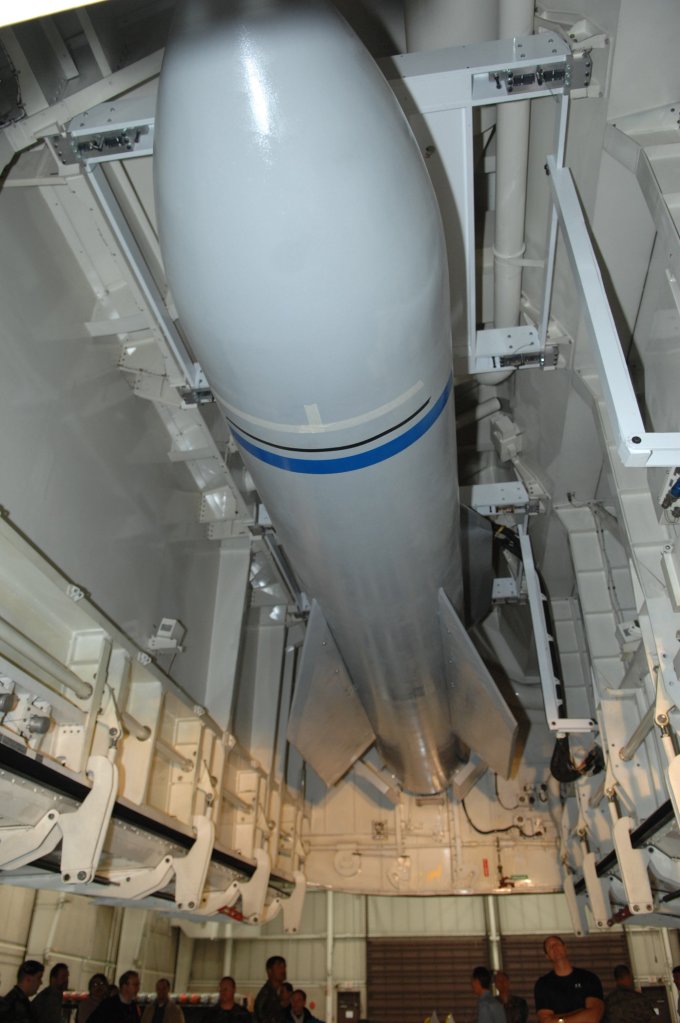
“The Air Force established the LPSF Quick Reaction Capability program in August 2018 to respond to a validated urgent operational need, to integrate and qualify a smart fuze capability into the MOP that had been previously fielded as the Enhanced Threat Response [ETV] weapon modifications,” the report adds. “This upgrade, known as MOP Modification, provides the capability to hold at risk additional high-value HDBTs [hard and deeply buried targets] with limited threat intelligence.”
When it comes to bunker bombs, especially when employed against subterranean targets, effectiveness is not just about hitting the right mark, but also about detonating at the most optimal moment after burrowing down into the ground. Available intelligence about the target’s exact depth and general layout underground may be limited, as well. All of these issues are further magnified when it comes to the MOP, which is designed to penetrate especially deep, up to at least 200 feet (60 meters), according to publicly available data.
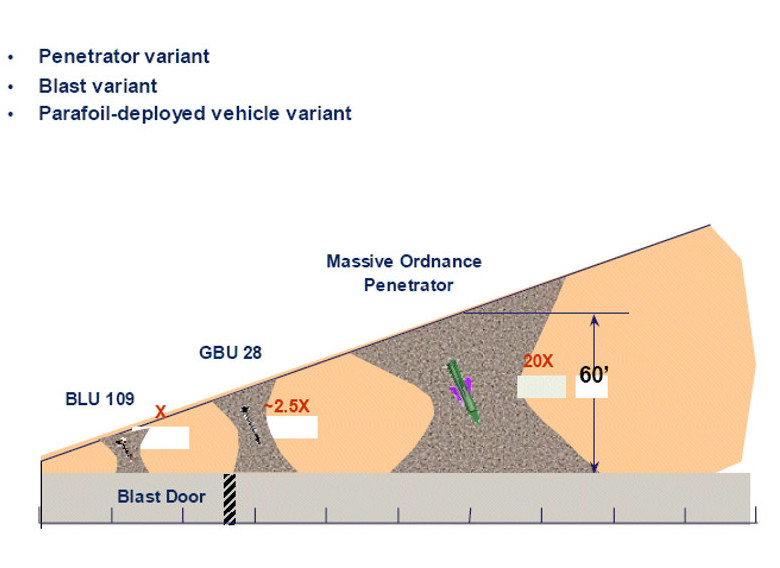
What specific capabilities LPSF offers are unknown, but the U.S. military has publicly invested significant resources in the development of advanced void-sensing fuzes for smaller 2,000 and 5,000-pound class bunker buster bombs. A void-sensing fuze is designed to trigger when it detects a sufficiently large open space, such as a room in an underground facility. This can be further combined with a delay element to allow the bomb to break deeper into the target before detonating for maximum effect.
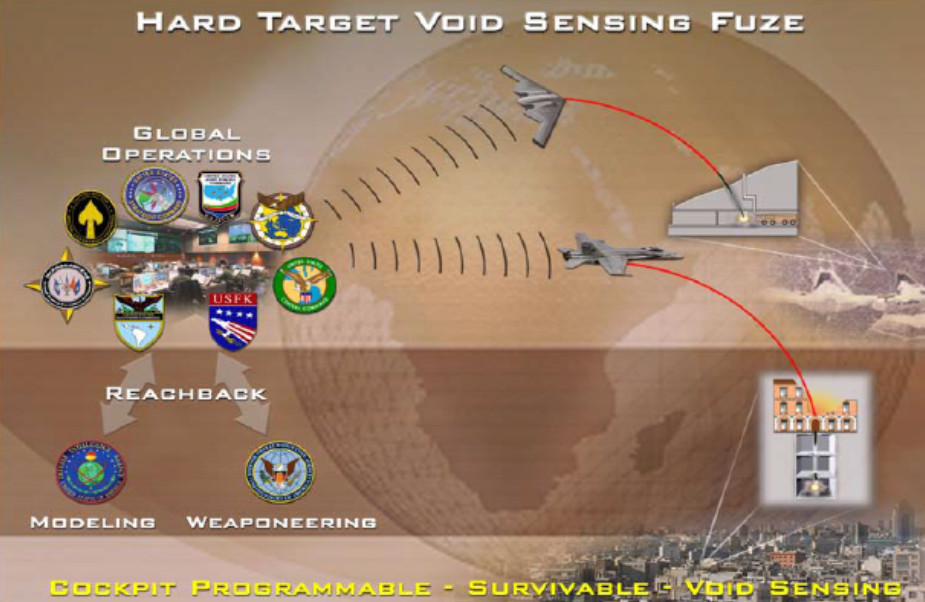
LPSF could offer additional features to improve the overall effectiveness of the MOP.
DOT&E’s new report further highlights the challenges involved in testing new capabilities for the MOP even against subscale targets, let alone full-size threat representative ones.
“Due to program funding reprioritization, Defense Threat Reduction Agency (DTRA) contract challenges that affected the ability to construct targets to support testing, and modifications to the delivery platform, the MOP Modification program was unable to execute planned testing in FY21 and FY22,” per the report. “The Air Force rescheduled the test events into FY23 and FY24.”
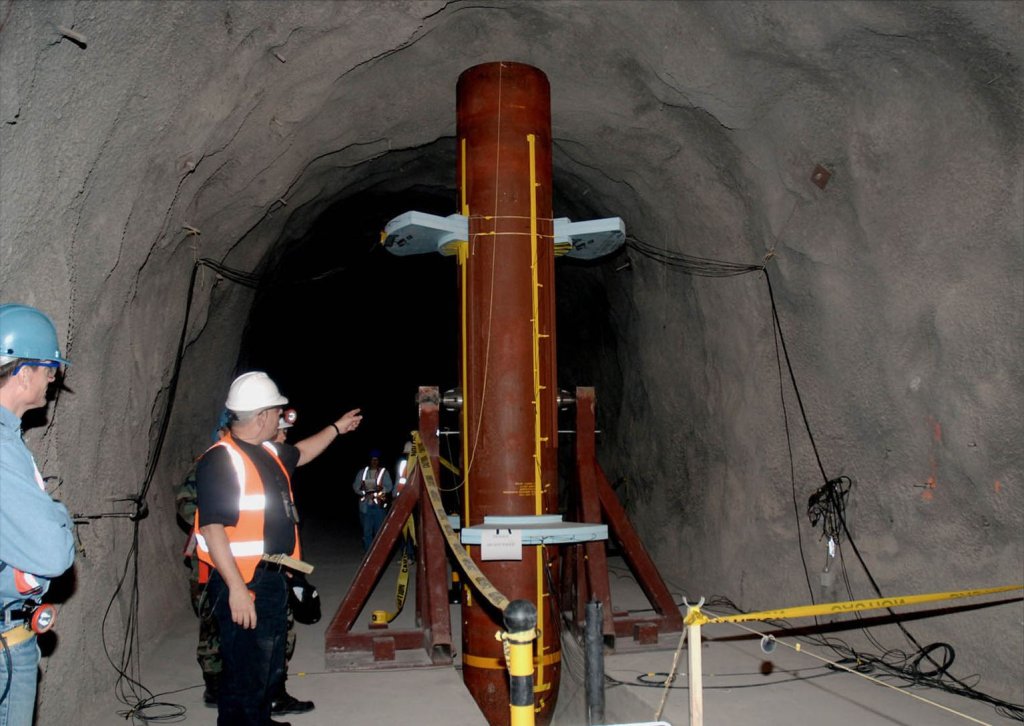
“Changes made by DTRA to expedite the contracting and test plan review process have resulted in no material headway, and delays continue. While significantly delayed, the program was able to execute testing at the end of FY23 and in FY24,” the report continues. “Despite the delays in test execution and reductions in subscale testing, the program is proceeding with key performance milestones.”
“Subscale lethality testing was reduced in scope (by approximately 50 percent) due to funding redirection from the Air Force and test execution cost growth within DTRA. The reduced subscale test effort concluded in September 2024,” the report adds. “The DoD has limited test locations that allow for subscale and full-scale testbed construction, leading to high-demand and expensive, long-lead time, and custom-tailored testbed.”
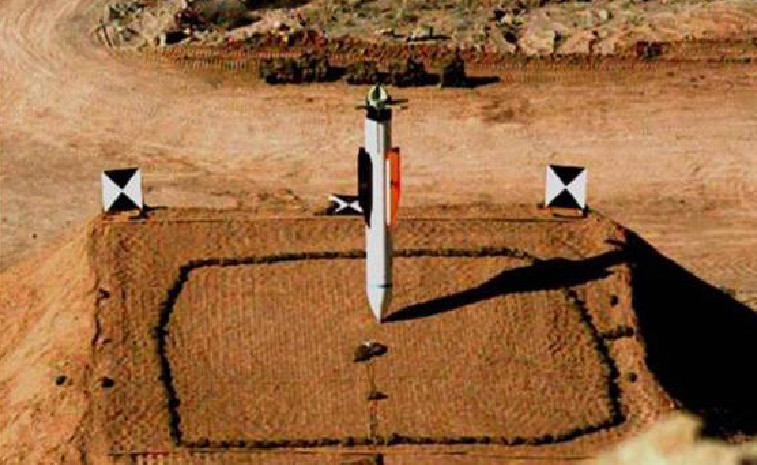
The general value of having a non-nuclear, very deep-penetrating weapon like MOP in the U.S. military’s arsenal is only increasing. America’s near-peer competitors China and Russia continue to build new hardened and/or underground facilities, including bases with deep caverns for aircraft and submarines, which would be important in the event that a high-end conflict erupts. Just last week, the Financial Times published a detailed report on a new 1,500-acre command center complex with a major subterranean component that the Chinese People’s Liberation Army (PLA) is building in the western end of the country’s sprawling capital Beijing.
Other smaller potential adversaries, especially Iran and North Korea, have been increasingly pushing critical facilities underground in no small part because of the threat of strikes from countries like the United States. A report from The Associated Press in 2023 notably highlighted concerns that new underground additions to Iran’s Natanz nuclear site could be out of the reach of MOP.
Last year, Israeli forces also conducted a dramatic commando raid that destroyed an underground missile production facility in Syria that had been built with Iranian assistance, which you can read about here. That operation underscored the challenges of neutralizing these kinds of deeply buried and hardened sites and signaled, especially to Iran, Israel’s willingness and ability to take such steps to do so.

MOP, in combination with the stealth B-2, also gives the U.S. military a unique option for prosecuting deeply buried and hardened targets located in very heavily defended areas. The forthcoming B-21 Raider stealth bomber will offer even more capability in this regard. The Air Force has also been looking at adding new 5,000-pound class GBU-72/A bunker buster bombs to the B-2’s arsenal in the meantime.
The Pentagon explicitly highlighted all of this in a statement following B-2 strikes on “hardened underground weapons storage locations in Houthi-controlled areas of Yemen” last October, which stressed “the United States’ ability to target facilities that our adversaries seek to keep out of reach, no matter how deeply buried underground, hardened, or fortified.” As TWZ noted at the time, the use of B-2s in this case was clearly meant to send signals beyond Yemen, particularly to Iran.
All of this underscores the importance of the LPSF and other upgrades to the MOP, as well as ongoing testing to validate those improvements.
Contact the author: joe@twz.com
